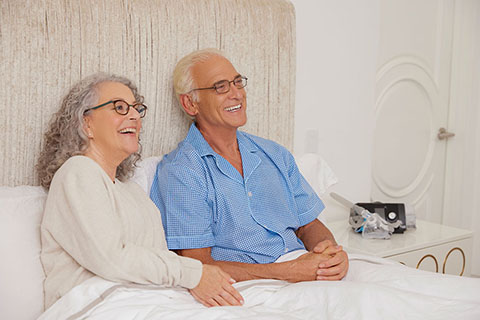Allergy symptoms like sneezing, scratchy throat, headache, watery eyes, and runny nose intensify coughing and difficulty breathing during the night. To ensure better sleep throughout the Spring allergy season, follow these tips to keep your CPAP machine running smoothly and your allergies under better control.
Clean or replace your reusable CPAP parts
It is essential to clean and replace your CPAP components regularly. Filters, tubing, and masks routinely get dirty or wear out, so make sure you have new parts on hand at the start of allergy season. If you have recently replaced your CPAP components, clean them thoroughly by soaking them in a mixture of mild soap and water or vinegar and water. Make sure to rinse rigorously with water after soaking with vinegar.
Consider discussing a full-face mask with your healthcare provider if you do not currently use one. Congestion is a common issue during allergy season, making it difficult to breathe while using your CPAP. If you are congested, your mask may not effectively circulate air, forcing you to breathe through your mouth. When this occurs, you are not getting enough air and, consequently, enough oxygen while you sleep. A full-face mask can increase your oxygen intake. You may sacrifice a bit of comfort, but you will benefit from more unrestricted breathing while you sleep.
Use a room humidifier
Many CPAP machines have built-in humidifiers, which is especially useful during allergy season. Humidifiers keep the air you breathe warm and moist, reducing the effects of allergies such as nasal congestion and a dry, scratchy throat. If your CPAP does not have a humidifier, consider investing in a stand-alone room humidifier.
Keep in mind that a humidifier must be properly maintained to function optimally. Clean it and replace the water every day to prevent mineral build-up and malfunctions. A stand-alone room humidifier has the added benefit of portability, allowing you to use it wherever needed in your living space for added comfort throughout the day.
Clean your bedding and dusty surfaces
Pollen and ragweed, two common allergy triggers, often enter our homes and attach themselves to our living spaces' surfaces. Start the season with clean sheets and pillowcases and regularly wash them or swap them out for a fresh set.
Regular cleaning of your home is also essential. Irritants such as dust, pet dander, and mold can quickly build up. Combined with spring allergens, they can be challenging to manage. Cleaning your home from top to bottom can alleviate symptoms of common allergens.
Take antihistamines
If pollen and other Spring allergens hit you especially hard, medication can help. An over-the-counter nasal spray or tablet is often the easiest, fastest option for alleviating symptoms. The downside is that anti-allergy medicines can cause drowsiness, so look for one appropriate for daytime use. Be sure to check with your healthcare provider before taking antihistamines to ensure they are safe to mix with your therapy and other prescriptions.
Consult your healthcare provider
Your healthcare provider is an excellent resource to help you cope with Spring allergies. If you feel like your allergies affect your sleep apnea, call your healthcare provider for recommended treatment options.


